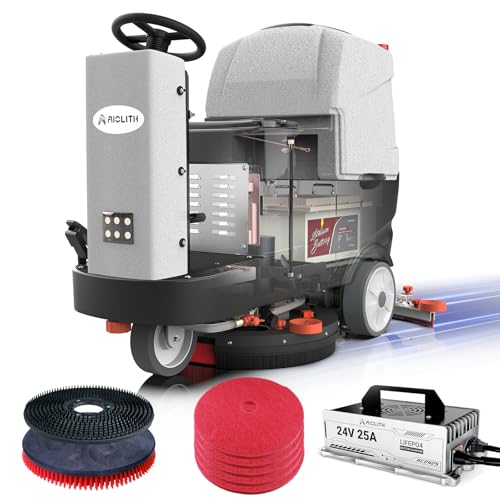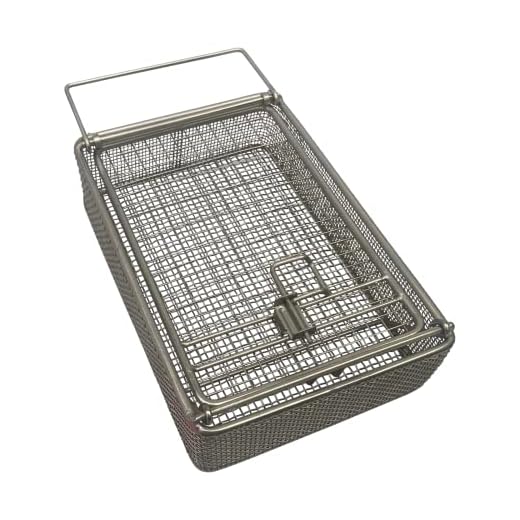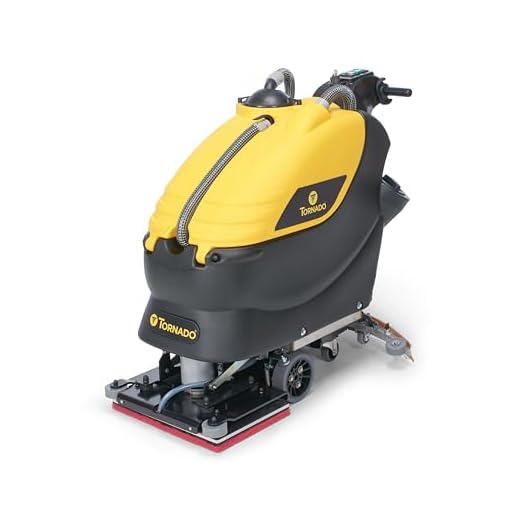




Acid scrubber tanks are an essential component of many industrial processes, particularly those involving the use of acidic chemicals. These tanks are responsible for removing harmful fumes and gases from the air, ensuring a safe working environment for employees. However, over time, these tanks can become contaminated with a buildup of acid residue and other deposits, which can impact their performance and lead to potential hazards.
Regular cleaning and maintenance of acid scrubber tanks are therefore crucial to ensure their optimal functionality and to prevent any safety risks. In this article, we will provide you with a step-by-step guide on how to effectively clean an acid scrubber tank.
Step 1: Safety Precautions
Before beginning the cleaning process, it is imperative to take the necessary safety precautions. This includes wearing appropriate personal protective equipment (PPE) such as gloves, goggles, and a respirator to protect against potential exposure to harmful chemicals and fumes. Make sure that the area is well-ventilated and avoid smoking or open flames in the vicinity.
Follow these steps to ensure a safe cleaning process for your acid scrubber tank.
What is an Acid Scrubber Tank?
An acid scrubber tank is a specialized container designed to safely remove and neutralize harmful gases and fumes generated during industrial processes that involve the use of acids. It is an essential component of an acid scrubber system, which is used to protect workers and the environment from the harmful effects of these corrosive substances.
The tank is typically made of corrosion-resistant materials, such as high-density polyethylene or fiberglass, to withstand the corrosive nature of acid vapors. It is designed to capture the acid fumes and contain them within the tank, preventing their release into the atmosphere.
Inside the acid scrubber tank, a series of chemical reactions take place to neutralize the acid vapors. The tank is filled with a scrubbing liquid, usually water mixed with alkaline or neutralizing agents, which reacts with the acid gases to convert them into harmless compounds. The scrubbing liquid may be recirculated or disposed of, depending on the specific application.
An acid scrubber tank is equipped with various components, including inlet and outlet connections, mist eliminators, scrubbing media, monitoring sensors, and controls. These components work together to optimize the scrubbing process and ensure the efficient removal of acid fumes.
Overall, an acid scrubber tank plays a critical role in maintaining a safe and healthy working environment in industries that handle corrosive acids. Regular inspection, maintenance, and cleaning are essential to ensure the tank’s functionality and prevent the buildup of corrosive substances.
Why is Cleaning Important?
Cleaning an acid scrubber tank is an essential maintenance task that should never be overlooked. Regular cleaning not only helps to maintain the efficiency of the scrubber but also plays a crucial role in ensuring the safety of the workers and the environment.
Here are a few reasons why cleaning is important:
Maintaining Efficiency
Over time, acid scrubber tanks can become clogged with debris, sludge, and other contaminants, which can hinder the scrubber’s performance. By regularly cleaning the tank, you can remove these build-ups and maintain the efficiency of the system. A clean tank allows for proper airflow and contact between the acid and the scrubbing media, ensuring effective contaminant removal.
Preventing Corrosion
Acidic gases and liquids can be highly corrosive, and if left unchecked, they can damage the tank and other components of the system. By cleaning the tank regularly, you can remove any corrosive chemicals that may have accumulated. This helps to prevent corrosion, extend the lifespan of the tank, and reduce the likelihood of leaks and other costly repairs.
Ensuring Worker Safety
Working with acid scrubber tanks can be hazardous, and cleaning them requires following proper safety protocols. Regular cleaning ensures that any dangerous fumes, residues, or spills are promptly addressed, minimizing the risk of exposure to workers. By maintaining a clean and safe working environment, you can help prevent accidents, injuries, and long-term health problems.
A clean acid scrubber tank is not only beneficial for the overall performance of the system but also critical for the well-being of the workers and the environment. Regular cleaning and maintenance should be an integral part of any acid scrubber tank maintenance plan.
| Benefits of Cleaning |
|---|
| Maintains efficiency |
| Prevents corrosion |
| Ensures worker safety |
Step-by-Step Guide to Cleaning an Acid Scrubber Tank
Proper cleaning and maintenance of an acid scrubber tank is essential to ensure its optimal performance and prolong its lifespan. Follow this step-by-step guide to effectively clean an acid scrubber tank.
- Gather necessary equipment: Before starting the cleaning process, gather all the necessary equipment such as safety goggles, gloves, rubber boots, a hose, a pressure washer, a scrub brush, and the appropriate cleaning solution.
- Prepare the area: Ensure that the area surrounding the acid scrubber tank is well ventilated. Remove any debris or objects that might obstruct the cleaning process.
- Put on safety gear: Prioritize safety by wearing safety goggles, gloves, and rubber boots to protect yourself from potential splashes and exposure to harmful chemicals.
- Drain the tank: Open the drain valve of the acid scrubber tank to drain out the remaining liquid. It is important to ensure that the tank is completely empty before proceeding with the cleaning process.
- Rinse the tank: Use a hose to thoroughly rinse the interior of the tank. This will help remove any loose debris or residues that may be present.
- Apply the cleaning solution: Prepare the appropriate cleaning solution according to the manufacturer’s instructions. Apply the solution to the interior of the tank, ensuring to cover all surfaces.
- Scrub the tank: Use a scrub brush or a pressure washer to scrub the interior of the tank. Pay extra attention to areas with stubborn stains or residue buildup.
- Rinse the tank again: After scrubbing, thoroughly rinse the tank with water to remove the cleaning solution and any remaining debris.
- Inspect for cleanliness: Inspect the interior of the tank to ensure that it is clean and free from any residue or stains. Repeat the cleaning process if necessary.
- Dry the tank: Allow the acid scrubber tank to dry completely before closing the drain valve and initiating its normal operation.
- Dispose of waste properly: Dispose of any waste generated during the cleaning process in accordance with local regulations and guidelines.
By following this step-by-step guide, you can effectively clean an acid scrubber tank and maintain its optimal performance. Regular cleaning and maintenance will help ensure the longevity of the tank and enhance its efficiency.
Step 1: Safety Precautions
When cleaning an acid scrubber tank, it is important to prioritize safety precautions to prevent accidents and ensure a safe working environment. Follow these guidelines before starting the cleaning process:
1. Wear Protective Gear
Put on appropriate personal protective equipment (PPE) to safeguard yourself from potential hazards. This includes:
- Chemical-resistant gloves: Protect your hands from exposure to harmful chemicals.
- Goggles or a face shield: Shield your eyes and face from splashes or corrosive agents.
- Protective clothing: Wear coveralls or a chemical-resistant suit to provide full-body protection.
- Respiratory mask: Depending on the cleaning agents used, wear a respirator mask to filter out any harmful gases or fumes.
2. Ventilate the Area
Ensure that the cleaning area is well-ventilated to minimize the concentration of any toxic fumes or gases. Open doors and windows, or use an exhaust fan to improve air circulation.
3. Identify and Isolate Power Sources
Identify any power sources or electrical connections near the tank and switch off the power supply to prevent electrical incidents. Additionally, lock out any valves or control systems that may interfere with the cleaning process.
4. Test and Monitor the Air Quality
Before entering the tank, use air quality monitoring equipment to check for the presence of harmful gases or fumes. Only proceed with the cleaning process if the air quality is deemed safe.
5. Establish Emergency Procedures
Prepare an emergency plan in case of accidents or unexpected situations. Ensure that all workers are aware of the emergency procedures and have access to first aid kits or emergency eyewash stations.
By following these safety precautions, you can minimize the risks associated with cleaning an acid scrubber tank and promote a safe working environment.
Step 2: Draining the Tank
Once you have completed the initial safety precautions and have gathered all the necessary equipment and materials, it is time to start draining the acid scrubber tank. Follow these steps to ensure a safe and effective process:
|
Step 1: Turn off all the power sources connected to the tank to prevent any accidents or malfunctions during the draining process. |
Step 2: Wear appropriate personal protective equipment (PPE) such as gloves, goggles, and an apron to protect yourself from any contact with the acid or harmful fumes. |
|
Step 3: Locate the drain valve at the bottom of the tank. This valve is typically marked with a label or sign indicating its purpose. |
Step 4: Position a suitable container or barrel beneath the drain valve to collect the acid solution that will be drained from the tank. |
|
Step 5: Slowly open the drain valve, allowing the acid solution to flow into the container. Be cautious not to allow any spills or splashes during this process. |
|
|
Step 6: Monitor the draining process closely, ensuring that the acid solution is flowing smoothly and without any blockages or obstructions. |
|
|
Step 7: Once the tank is completely drained, close the drain valve securely to prevent any accidental leaks or drips. |
Step 8: Dispose of the collected acid solution according to your local regulations and guidelines for handling hazardous waste. |
By following these steps, you will be able to drain the acid scrubber tank safely and efficiently, preparing it for the next steps of the cleaning process.
Step 3: Removing Residual Acid
After draining the bulk of the acid from the scrubber tank, it is important to remove any residual acid that may be left behind. This step is crucial to ensure the next cleaning steps are effective and to maintain the longevity of the acid scrubber tank.
To remove the residual acid, follow these steps:
- Prepare a neutralizing solution by mixing water and a suitable neutralizing agent. Commonly used neutralizing agents include lime or soda ash. Follow the instructions provided by the manufacturer for the correct ratio of water to neutralizing agent.
- Wear proper protective gear, including gloves, goggles, and a lab coat or coverall. Acid residue can still be corrosive and harmful to the skin and eyes.
- Safely pour the neutralizing solution into the scrubber tank. Be cautious and avoid splashing.
- Use a long-handled brush or a scrubber to agitate the neutralizing solution inside the tank. This will help ensure thorough mixing and neutralization of the residual acid.
- Allow the neutralizing solution to sit in the tank for the recommended duration, as specified by the neutralizing agent manufacturer. This will ensure complete neutralization of the acid.
- Drain the neutralizing solution from the tank, following the same procedures as described in Step 2.
- Rinse the tank thoroughly with clean water to remove any remaining neutralizing solution.
- Inspect the tank for any signs of remaining acid or damage. If any acid residue or damage is found, repeat the neutralizing and rinsing steps until the tank is clean and acid-free.
Removing residual acid from the scrubber tank is an essential step in the cleaning process. Skipping or neglecting this step can lead to inadequate cleaning and potential damage to the tank. Take the time to properly neutralize and rinse the tank to ensure its effectiveness and longevity.
Step 4: Scrubbing the Tank
Once the tank is drained, it’s time to start scrubbing the interior to remove any remaining residue and build-up. Here’s a step-by-step guide on how to effectively scrub the acid scrubber tank:
1. Safety Precautions
Before you begin scrubbing, make sure you are wearing the necessary protective gear, including gloves, goggles, and a respirator. Acidic substances can cause severe burns and be harmful if inhaled.
2. Prepare the Cleaning Solution
Mix a solution of warm water and a mild detergent or acid-neutralizing cleaner. Avoid using abrasive cleaners as they can damage the interior of the tank.
3. Scrub the Interior
Use a soft-bristle brush or a scrub pad to gently scrub the walls, floor, and any other surfaces inside the tank. Pay extra attention to corners and hard-to-reach areas where residue may accumulate.
4. Rinse Thoroughly
Once you are done scrubbing, thoroughly rinse the tank with clean water to remove any remaining cleaning solution and traces of acid. This will help prevent corrosion and maintain the tank’s integrity.
5. Inspect for Residue
After rinsing, inspect the tank for any signs of remaining residue or build-up. If necessary, repeat the scrubbing process or spot-clean the affected areas with a sponge or cloth.
6. Dry the Tank
Allow the tank to air dry completely before reassembling or using it. Moisture can promote the growth of bacteria or other contaminants, so ensure the tank is completely dry before further operations.
Following these steps will help ensure the acid scrubber tank is effectively cleaned and ready for future use. Remember to always follow safety guidelines when working with acids and chemicals.
Please note: The specific cleaning process may vary depending on the type and size of the acid scrubber tank. Always consult the manufacturer’s instructions for best results.
| Materials Needed: | – Gloves |
|---|---|
| – Goggles | |
| – Respirator | |
| – Soft-bristle brush or scrub pad | |
| – Mild detergent or acid-neutralizing cleaner |







